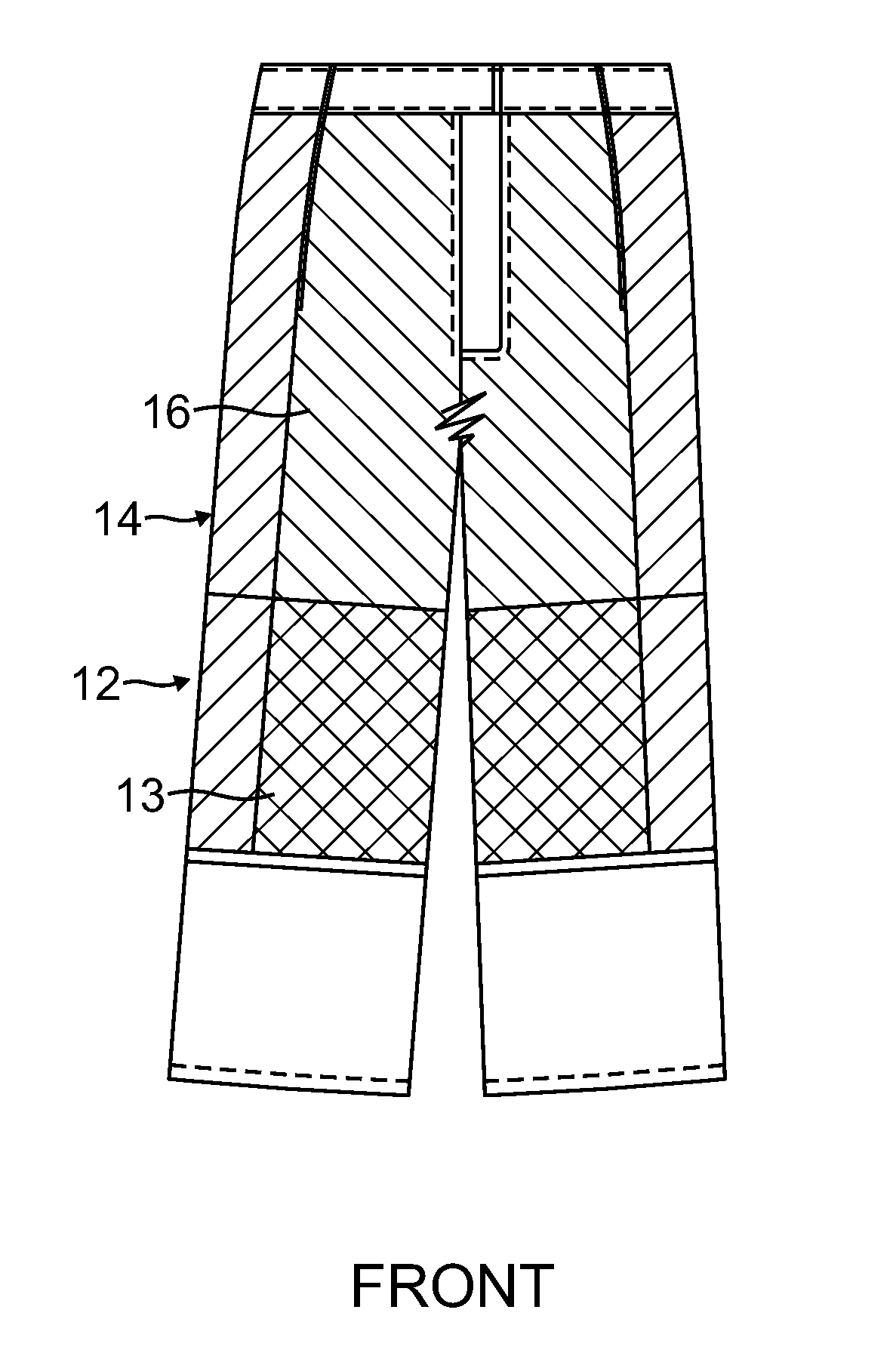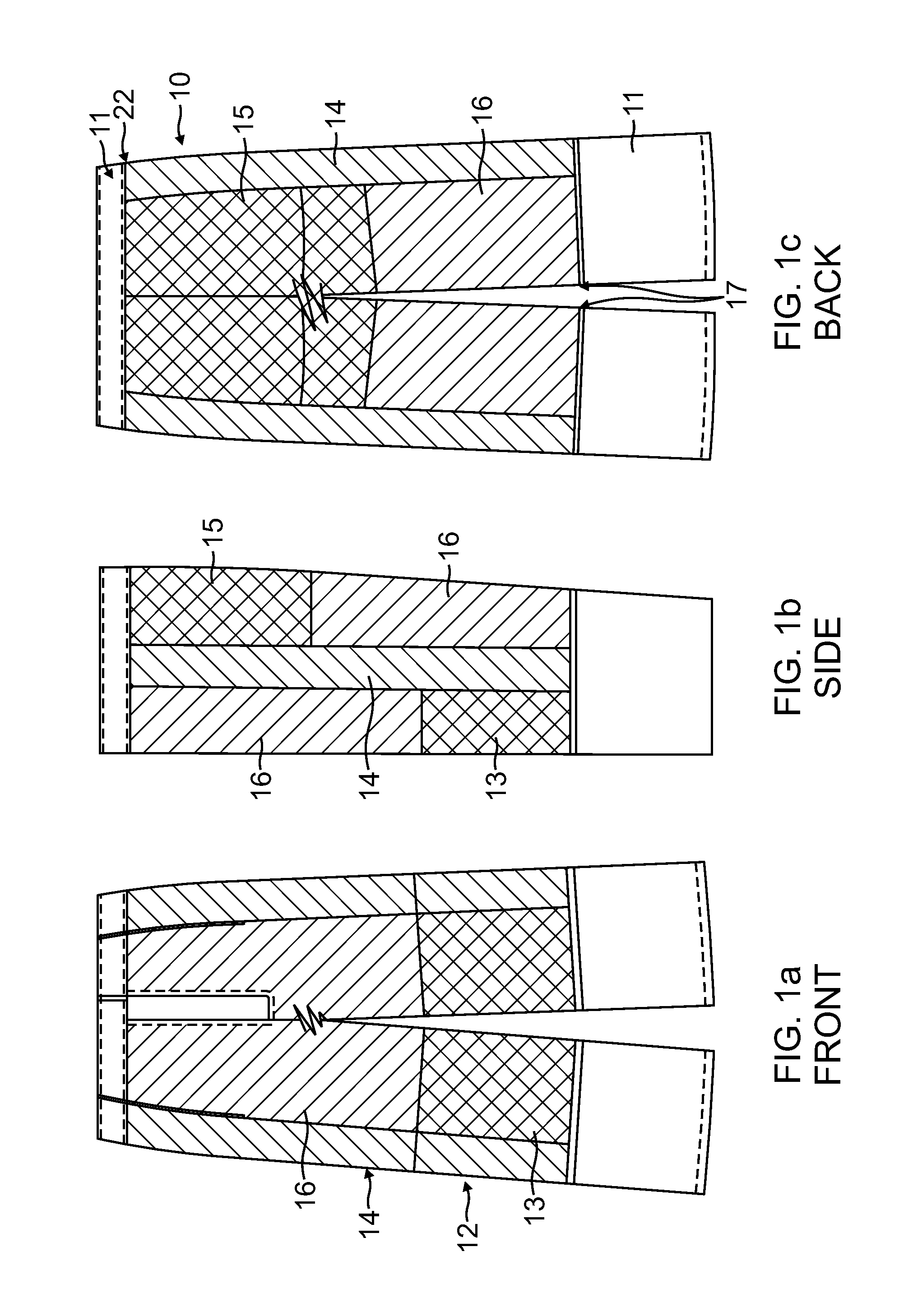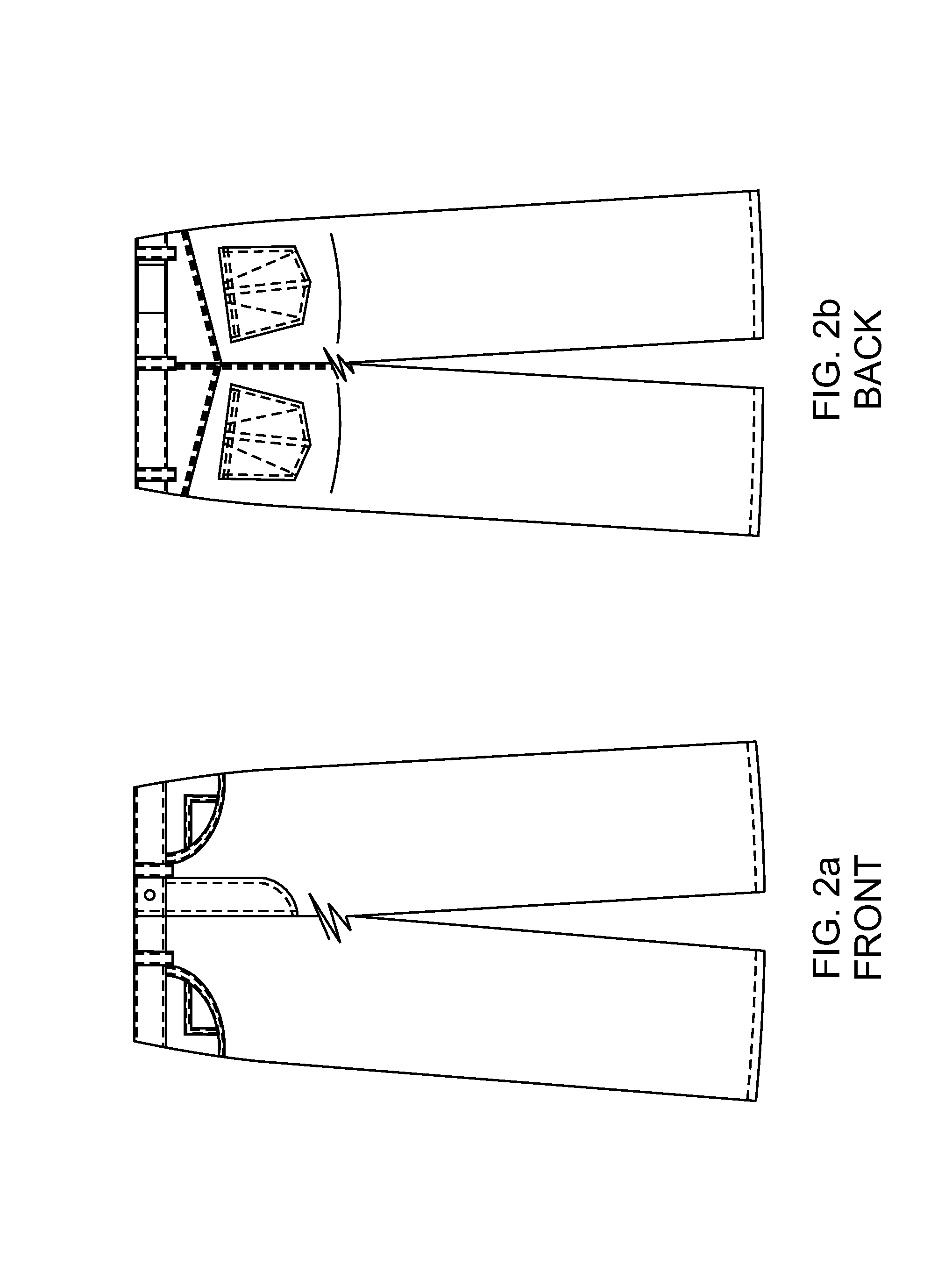Protective clothing
a technology for protecting clothing and clothing, applied in the field of protecting clothing, can solve the problems of clothing still taking the appearance, clothing made of leather, and often not being appropriate for fashion, business or social use, etc., and achieve the effects of adequate protection, extending the use, and removing the difficulty associated
- Summary
- Abstract
- Description
- Claims
- Application Information
AI Technical Summary
Benefits of technology
Problems solved by technology
Method used
Image
Examples
Embodiment Construction
[0022]For a better understanding of this invention it will now be described with the assistance of figures.
[0023]FIGS. 1a, 1b and 1c are plan views of an arrangement in accord with an embodiment of the invention showing the inner-side of trousers from the front, side and back, respectively.
[0024]FIGS. 2a and 2b are plan views of the outer-side of the trousers shown in FIG. 1 from the front and back, respectively.
[0025]FIGS. 3a, 3b and 3c are enlarged views of the stitching of the fabric at the inner seam of the garment shown in FIG. 1.
[0026]FIGS. 4a and 4b are plan views of another arrangement in accord with an embodiment of the invention showing the inner-side of trousers from the front and back, respectively.
[0027]FIGS. 5a and 5b are plan views of the outer-side of the trousers shown in FIGS 4a and 4b from the front and back, respectively.
[0028]Referring in detail to the figures, in particular to FIG. 1, this depicts a piece of protective clothing according to the present inventio...
PUM
 Login to View More
Login to View More Abstract
Description
Claims
Application Information
 Login to View More
Login to View More - R&D
- Intellectual Property
- Life Sciences
- Materials
- Tech Scout
- Unparalleled Data Quality
- Higher Quality Content
- 60% Fewer Hallucinations
Browse by: Latest US Patents, China's latest patents, Technical Efficacy Thesaurus, Application Domain, Technology Topic, Popular Technical Reports.
© 2025 PatSnap. All rights reserved.Legal|Privacy policy|Modern Slavery Act Transparency Statement|Sitemap|About US| Contact US: help@patsnap.com



